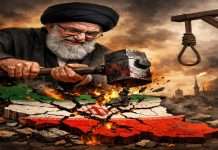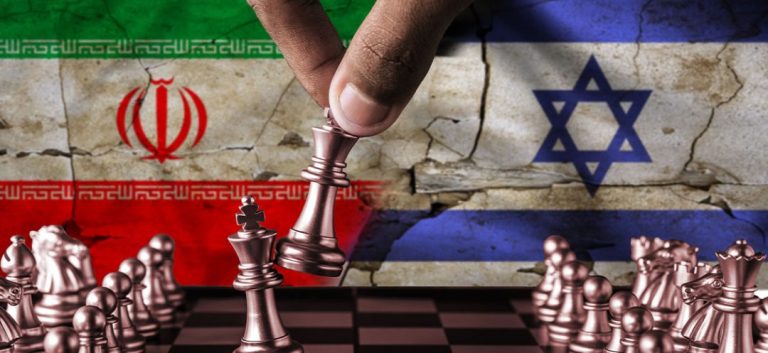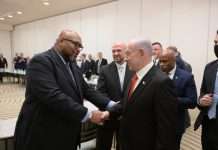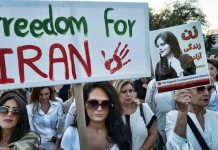مليارات ضاعت، ولا شيء تحقق: الانهيار الاستراتيجي لبرنامج إيران النووي
الدكتور ماجد رفيزاده/العربية الإنجليزية/ 17 تموز 2025
(ترجمة بتصرف من الإنكليزية بواسطة الياس بجاني بالإستعانة بمواقع ترجمة ألطترونية متعددة)
Billions lost, nothing gained: The strategic collapse of Iran’s nuclear program
Dr. Majid Rafizadeh/Al Arabiya English/17 July/2025
In order to evaluate the true status of Iran’s nuclear program following the recent joint Israeli and US military strikes, two main aspects must be carefully examined: the physical infrastructure that forms the backbone of the program, and the stockpiles of enriched uranium that give the program its potential for weaponization. These two elements – hardware and material – are not interchangeable. One without the other renders a nuclear ambition incomplete. And in the case of Iran, both have taken devastating blows, raising the question of whether decades of national sacrifice, international confrontation, and financial commitment have just been rendered meaningless.
Iran’s nuclear infrastructure – the physical sites, centrifuge arrays, underground bunkers, laboratories, and research facilities – has been systematically crippled. These were not minor tactical strikes but a calculated, technologically sophisticated campaign designed to render key facilities inoperable for the foreseeable future. The Isfahan Nuclear Technology Research Center, long considered a linchpin in Iran’s uranium enrichment chain, was among the most severely hit. Satellite images reveal scorched tunnel entrances, collapsed roof structures, and targeted penetrations deep underground. Experts who have reviewed the aftermath suggest that centrifuge production lines, command control systems, and clean room laboratories have been wiped out or rendered unusable. In effect, what took decades to build – with precision engineering, international procurement efforts, and highly trained scientific teams – was largely eliminated in under two weeks. It is not merely a symbolic setback; it is a material and operational catastrophe for the program.
Rebuilding this infrastructure is not a matter of weeks or months. It will require a minimum of two to three years under ideal conditions – assuming there are no more foreign strikes, no new sanctions, and no loss of technical expertise. And those assumptions themselves are increasingly unrealistic. Iran would need to reconstruct centrifuge production sites from scratch, secure the highly specialized components needed for uranium enrichment, and establish the high-purity conditions needed for functioning nuclear research. Even more critically, the government would need to reassemble a team of scientists, engineers, and technicians with the unique experience necessary to safely and secretly run such a program. All this must be done while under the close scrutiny of Israeli intelligence, US surveillance, and likely sabotage efforts from multiple intelligence agencies.
While the infrastructure lies in ruins, a separate question remains: what happened to Iran’s stockpile of enriched uranium? Before the attacks, Iran had accumulated a considerable reserve – over 400 kilograms of uranium enriched up to 60 percent, according to international watchdogs and leaked intelligence assessments. This level of enrichment brings Iran close to weapons-grade material, although it still falls short of the 90 percent threshold typically needed for a bomb. There have been some reports suggesting that a portion of this uranium may have been hidden or moved prior to the strikes. However, even if some of this material remains intact, it is of limited strategic value without the ability to further refine, convert, and weaponize it.
Weaponization is not a matter of simply having enriched uranium. It requires an entire industrial and scientific apparatus. Iran would need functioning cascades of advanced centrifuges to continue enrichment. It would require weapon design expertise – knowledge of implosion methods, neutron initiators, and detonation mechanics. Then there is the challenge of developing a reliable delivery mechanism, typically a missile or other launch platform, capable of housing and delivering a nuclear warhead. Every one of these steps requires testing, verification, and expert oversight. Without the infrastructure, none of this is feasible. The enriched uranium, if it even exists in usable form, is now essentially inert.
Compounding the damage to Iran’s material assets is the staggering loss of human capital. At least 14 nuclear scientists and technicians were reportedly killed in the Israeli airstrikes. These were not replaceable technicians or anonymous bureaucrats. They represented the intellectual engine of the nuclear program – experts in isotope separation, nuclear metallurgy, weapons design, and high-level engineering. Training new personnel to this level of specialization takes years, sometimes decades. Moreover, in a climate of growing fear, surveillance, and instability, it will be increasingly difficult for Iran to attract young scientists to this field, especially when the risks of assassination, targeted strikes, or internal betrayal are so high. The loss of this brain trust may be even more devastating in the long term than the physical destruction of buildings and machines.
All of this comes against the backdrop of a resurgent Israeli military policy toward Iran. Prime Minister Benjamin Netanyahu has made it abundantly clear: if Iran makes any move to rebuild its nuclear capabilities or pursue a weapon, Israel will strike again. Israel’s doctrine is preemption, not deterrence. This recent operation demonstrated not just Israel’s air superiority, but also its precision strike capability deep inside Iranian territory. The use of advanced drones, bunker-busting missiles, and real-time intelligence reflects a level of surveillance and access inside Iran that is extraordinary. It suggests that Israeli agents or cyber networks have most likely infiltrated even the most secretive elements of Iran’s nuclear and military programs. In short, Iran is being watched continuously and closely – and any revival attempt will likely be identified and neutralized before it can gain momentum.
This brings us to the sobering reality of what Iran’s nuclear program represents today: a cautionary tale. The Islamic Republic has poured tens of billions of dollars over the decades into this endeavor. It has isolated itself diplomatically, suffered under relentless economic sanctions, lost countless opportunities for trade and cooperation, and placed the Iranian people under constant threat of war – all in pursuit of a nuclear deterrent that, in the end, may never materialize. Iran engaged in high-stakes brinkmanship with the West, negotiated and then violated nuclear agreements, and maintained a narrative of resistance and national pride centered on its nuclear ambitions. And yet, all of that has now been nearly erased in a matter of 12 days. The centrifuges, the research sites, the scientists, the material – it has all been shattered.
This outcome offers deeper lessons beyond military and technical implications. It underscores the immense danger of provoking powerful enemies with vastly superior military capabilities. It highlights the cost of allowing ideology and rivalry to dictate national policy. Instead of building bridges with its neighbors, Iran pursued influence through proxies, militias, and nuclear threats. Instead of investing in prosperity, innovation, and regional peace, it spent its resources on uranium enrichment and missile development. And now, after decades of effort, what remains is rubble and mourning.
The Iranian leadership must now face a critical decision point. If it attempts to rebuild its nuclear program, it is almost certain to face further Israeli attacks – possibly even deeper and more lethal. The infrastructure is gone, the scientific talent has been decimated, and the world is watching with heightened attention. Rebuilding is not just a technical challenge – it is a geopolitical dare to those who have already demonstrated their willingness to act decisively. There is no illusion of secrecy anymore. There is no diplomatic cover left. The message is clear: another move toward weaponization, and the next wave of strikes will follow.
In the final assessment, there can be little doubt that Iran’s nuclear program has been dramatically and significantly damaged. Its foundational elements – machines, minds, and material – have all been compromised. What took decades to build was dismantled in less than two weeks. The future of Iran’s nuclear ambitions now lies under heavy surveillance and even heavier consequences. Whether Iran chooses to escalate, rebuild, or pivot to diplomacy will determine not only the fate of its nuclear program, but potentially the future of the region.
مليارات ضاعت، ولا شيء تحقق: الانهيار الاستراتيجي لبرنامج إيران النووي
الدكتور ماجد رفيزاده/العربية الإنجليزية/ 17 تموز 2025
(ترجمة بتصرف من الإنكليزية بواسطة الياس بجاني بالإستعانة بمواقع ترجمة ألطترونية متعددة)
لتقييم الواقع الفعلي لبرنامج إيران النووي بعد الضربات العسكرية المشتركة التي نفذتها الولايات المتحدة وإسرائيل مؤخرًا، لا بد من دراسة جانبين محوريين: البنية التحتية الفيزيائية التي تُشكّل العمود الفقري للبرنامج، ومخزونات اليورانيوم المخصب التي تُوفّر له إمكانية التحول إلى برنامج تسليحي. فهاتان الركيزتان – الأجهزة والمادة – لا يمكن أن تحل إحداهما محل الأخرى، وغياب أي منهما يعني فشل المشروع برمّته. وفي حالة إيران، تلقّى كلا العنصرين ضربات ساحقة، ما يطرح تساؤلًا وجوديًا حول جدوى عقودٍ من التضحيات الوطنية، والمجابهات الدولية، والاستنزاف المالي.
لقد تم تفكيك البنية التحتية النووية الإيرانية – من منشآت مادية، ومصفوفات أجهزة طرد مركزي، ومنشآت تحت الأرض، ومختبرات، ومراكز أبحاث – بشكل منهجي ومدروس. لم تكن الضربات تكتيكية محدودة، بل شكّلت عملية عسكرية نوعية دقيقة ومدروسة تهدف إلى إخراج المنشآت الحيوية من الخدمة لسنوات. كان “مركز أصفهان لأبحاث التكنولوجيا النووية”، الذي يُعد بمثابة حجر الزاوية في سلسلة تخصيب اليورانيوم الإيرانية، من بين أكثر المواقع تضررًا. الصور الفضائية كشفت عن مداخل أنفاق محترقة، وهياكل منهارة، وضربات عميقة موجهة بدقة إلى عمق التحصينات. ويُجمع الخبراء على أن خطوط إنتاج أجهزة الطرد المركزي، وأنظمة التحكم والسيطرة، ومختبرات الغرف النظيفة، قد دُمِّرت أو باتت غير قابلة للتشغيل. ما بُني على مدى عقود عبر هندسة معقّدة، وجهود شراء دولية، وفرق علمية عالية التأهيل، تمّ القضاء عليه بالكامل خلال أقل من أسبوعين. هذه ليست نكسة رمزية، بل انهيار عملياتي شامل.
إعادة بناء هذه البنية ليست مسألة زمنية قصيرة. فهي تتطلب على الأقل بين سنتين وثلاث سنوات، حتى في ظل ظروف مثالية – أي بغياب هجمات جديدة، أو عقوبات إضافية، أو تسرب في الكفاءات. وهذه افتراضات لم تعد واقعية. سيتعين على إيران إعادة إنشاء منشآت إنتاج أجهزة الطرد المركزي من الصفر، وتأمين مكونات تقنية عالية الحساسية لتخصيب اليورانيوم، وتهيئة بيئة بحث نووي فائقة النقاء. لكن التحدي الأهم يكمن في إعادة تجميع الكادر البشري – من علماء ومهندسين وفنيين – ذوي الخبرة الاستثنائية المطلوبة لتشغيل هذا النوع من البرامج تحت غطاء أمني شديد. وكل ذلك يجب أن يتم تحت أعين المراقبة الإسرائيلية الدقيقة، والرصد الأمريكي المتواصل، والاختراقات المحتملة من قبل أجهزة استخبارات متعددة الجنسيات.
وفيما يتعلق بالمادة النووية، يُطرح تساؤل موازٍ: ما مصير مخزون إيران من اليورانيوم المخصب؟ قبل الغارات، كانت طهران تمتلك أكثر من 400 كغم من اليورانيوم المخصب بنسبة تصل إلى 60%، وفقًا لتقارير مراقبين دوليين وتسريبات استخباراتية. هذا المستوى يضع إيران على عتبة تصنيع السلاح، وإن لم يبلغ عتبة 90% المطلوبة لصناعة قنبلة نووية. ورغم تقارير تشير إلى احتمال تهريب أو إخفاء جزء من هذا المخزون قبيل الضربات، فإن الكمية المتبقية، حتى لو لم تتعرض للتلف، أصبحت عديمة القيمة الاستراتيجية بدون إمكانات إعادة التكرير، والتحويل، والتسليح.
القدرة على التسلّح لا تتوقف عند توافر المادة النووية. إنها تتطلب منظومة صناعية-علمية متكاملة. تحتاج إيران إلى سلاسل إنتاج متقدمة من أجهزة الطرد المركزي، وخبرات في تصميم الأسلحة – بما يشمل تقنيات الانفجار الداخلي، وبادئات النيوترونات، وميكانيكيات التفجير. كما تحتاج إلى تطوير وسيلة إيصال موثوقة – كمنصات صاروخية قادرة على حمل رأس نووي وإيصاله بدقة. كل خطوة تتطلب تجارب، ومصادقة، وإشرافًا متخصصًا. ومع انهيار البنية التحتية، تصبح هذه العمليات غير قابلة للتنفيذ. حتى لو وُجد اليورانيوم، فإنه أصبح خاملاً من الناحية العسكرية.
ويُفاقم من حجم الكارثة فقدان الرأسمال البشري. فقد أسفرت الضربات الجوية الإسرائيلية عن مقتل ما لا يقل عن 14 من أبرز العلماء والفنيين النوويين الإيرانيين. لم يكونوا موظفين إداريين أو بيروقراطيين يمكن استبدالهم، بل كانوا يشكلون العقل الاستراتيجي خلف البرنامج – متخصصون في فصل النظائر، والمعادن النووية، وتصميم الرؤوس الحربية، والهندسة المتقدمة. تدريب بدائل بمثل هذا المستوى قد يستغرق سنوات طويلة، بل حتى عقود. وفي ظل أجواء من القلق، والانكشاف الأمني، وغياب الاستقرار، يصبح من المستبعد أن تنجح إيران في جذب جيل جديد من العلماء إلى مشروع محفوف بالمخاطر، وسط تهديد دائم بالاغتيال أو الاختراق.
تأتي هذه التطورات في سياق تحول جذري في العقيدة العسكرية الإسرائيلية تجاه إيران. فقد أكد رئيس الوزراء بنيامين نتنياهو صراحة أن أي محاولة من إيران لإعادة بناء قدراتها النووية أو السعي لحيازة السلاح، ستواجه برد فوري وصارم. فالعقيدة الإسرائيلية في هذه المرحلة هي الضربات الوقائية، لا الردعية. العملية الأخيرة لم تُظهر التفوق الجوي الإسرائيلي فحسب، بل أثبتت أيضًا عمق الاختراق الاستخباراتي والدقة في تنفيذ العمليات في عمق الأراضي الإيرانية. واستخدام الطائرات المسيّرة المتطورة، والصواريخ الخارقة للتحصينات، والمعلومات الاستخبارية اللحظية، يكشف أن إسرائيل تملك قدرة تشغيلية عالية داخل العمق الإيراني، وأنها نجحت على الأرجح في اختراق أكثر الدوائر النووية والعسكرية سرية في النظام. أي محاولة لإعادة إحياء البرنامج ستُكتشف وتُحبط قبل أن تكتسب أي زخم.
أمام كل ذلك، يتجلّى الواقع المأساوي: ما يسمى بـ “البرنامج النووي الإيراني” بات عبرة سياسية واستراتيجية. لقد أنفقت الجمهورية الإسلامية عشرات المليارات من الدولارات على مدار عقود، ودفعت أثمانًا دبلوماسية واقتصادية باهظة، وقمعت تطلعات شعبها، فقط لأجل وهم الردع النووي. تفاوضت ثم خرقت الاتفاقيات، وراكمت خطابًا شعبويًا يتمحور حول “الكرامة والسيادة والمقاومة”، وكل ذلك انهار خلال أقل من أسبوعين. أجهزة الطرد، المواقع، الكفاءات، المواد – كلها تبخرت.
النتائج تحمل دلالات تتجاوز الأبعاد العسكرية والتقنية. إنها تُبرز خطورة استفزاز قوى تمتلك تفوقًا استراتيجيًا ساحقًا، وتُحذر من الانجرار وراء أيديولوجيات راديكالية على حساب مصالح الدولة. بدلًا من الاستثمار في التنمية، والانفتاح، والتكامل الإقليمي، كرّست إيران مواردها لبرامج نووية وصاروخية تهديدية. وها هي اليوم تجني ثمار خياراتها: عزلة، دمار، وخسائر لا تُعوّض.
القيادة الإيرانية باتت اليوم أمام مفترق طرق مصيري. أي محاولة لإعادة بناء البرنامج ستُقابل بضربات أشد وأوسع. البنية دُمرت، العقول سُحقت، والعالم يراقب عن كثب. الأمر لم يعد مجرد تحدٍ تقني، بل رهان جيوسياسي محفوف بالعواقب في بيئة دولية غير متسامحة مع الغموض. لم يعد هناك مجال للمناورة، ولا غطاء دبلوماسي. الرسالة واضحة: أي اقتراب من التسلح سيؤدي إلى الموجة التالية من الضربات.
وبالنتيجة، لا جدال في أن البرنامج النووي الإيراني قد مُني بانهيار استراتيجي واسع النطاق. ركائزه الثلاث – الآلات، والعقول، والمادة – دُمِّرت. ما استغرق عقودًا لبنائه، سقط في أيام. مستقبل المشروع النووي الإيراني، ومعه مستقبل المنطقة، باتا رهينة لخيارات طهران القادمة: التصعيد، أو الانكفاء، أو الانخراط في دبلوماسية واقعية. القرار سيُحدد المصير.




















